




| Blackthorn Argent (Argyresthia spinosella (Stainton, 1849)) |





|
|
Scientific name: Argyresthia spinosella (Stainton, 1849) Common name: Blackthorn Argent French name: Argyresthe du prunellier Order: Lepidoptera Suborder: Microlepidoptera Family: Argyresthiidae Subfamily: Argyresthiinae Wingspan: 9-11 mm. Biotope: Hedgerows. Geographic area: Europe, Asia Minor. Flight time: May to July. Number of generations : 1 Caterpillar: Green with a black head. It grows on buds and flowers. Host plant: Blackthorn (Prunus spinosa). |
The microlepidoptera of the Yponomeutoidea superfamily and of the Argyresthiidae family are often observed landed on their two first pairs of legs with their body raised at 50 degrees. Argyresthia spinosella is white on the upper side of the head and on the inner edge of the fore wings. So, when at rest, you can observe a white dorsal band. This one is crossed by a broad greyish brown stripe located at about two thirds of the wing length. The costal edge of the fore wings, which is on each side when at rest, is greyish brown with white scales or spots. The most typical feature to tell Argyresthia spinosella apart among the many similar species is the orange yellow colour on the lateral sides of the head which extends a little on the costal edge of the fore wings. The three other species showing the same characteristic are the Oak-bark Argent (Argyresthia glaucinella), the Apple Fruit Moth (Argyresthia conjugella) and the Brown Rowan Argent (Argyresthia semifusca). The Oak-bark Argent (Argyresthia glaucinella) is a smaller size. The brown colour is rather dark. The yellow colour of the head does not extend so much towards the base of the fore wings than on Argyresthia spinosella. However it is very difficult to tell both species apart without a close look at the genitalia. The Apple Fruit Moth (Argyresthia conjugella) has a very dark ground colour, almost black. The Brown Rowan Argent (Argyresthia semifusca) is a very uniform dark brown colour on the lateral sides (when at rest), without any white scaling nor white spots ( except the dorsal band of course). Argyresthia spinosella over winters as an egg. |
| [To know more about the Blackthorn Argent] [Next picture] [Top] |
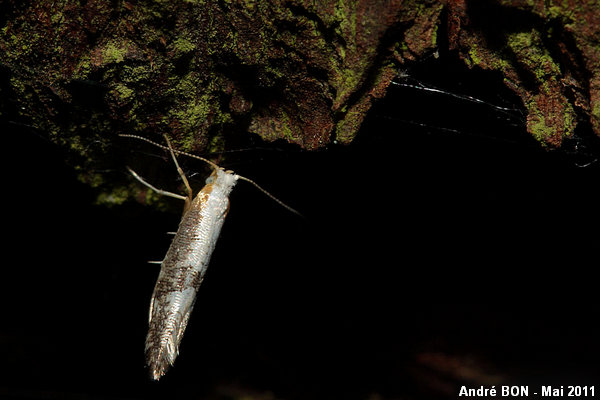
|
The yellow colour on the lateral sides of the head and its extension onto the base of the fore wings, associated with the greyish brown colour and white scaling make me think to the Argyresthia spinosella species. However I still think that there is possible confusion with Argyresthia glaucinella as it is not easy to evaluate the size of a moth on a picture, and I remember having found this one very small. For information this moth was landed on a Prunus cistella trunk. |
| [To know more about the Blackthorn Argent] [Next picture] [Previous picture] [Top] |
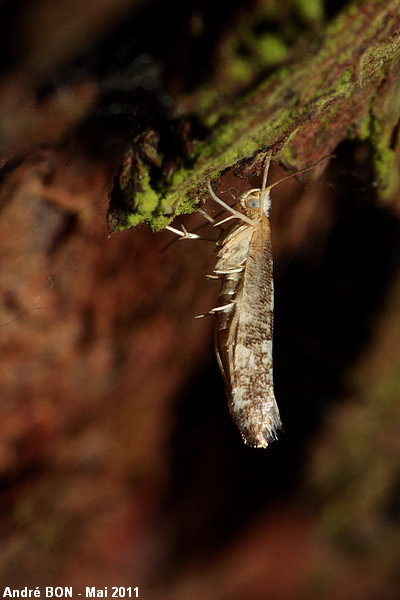
|
Side view. The extension of the yellow colour onto the fore wings is not so clear on this picture. The availability of host plants in the neighbourhood is also more favourable to Argyresthia glaucinella … |
| [To know more about the Blackthorn Argent] [Next picture] [Previous picture] [Top] |
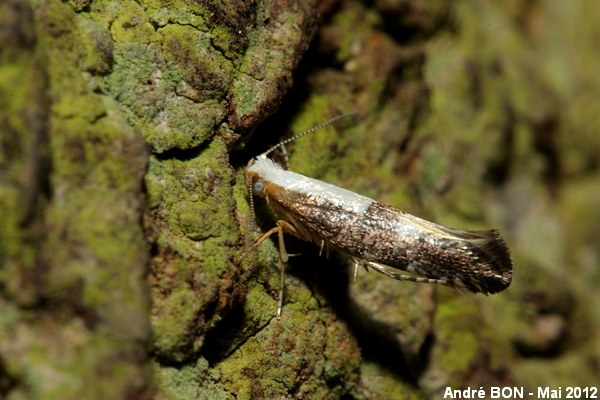
|
One year later, same trunk, same species and still the same doubt about the identification of the species. |
| [To know more about the Blackthorn Argent] [Next picture] [Previous picture] [Top] |
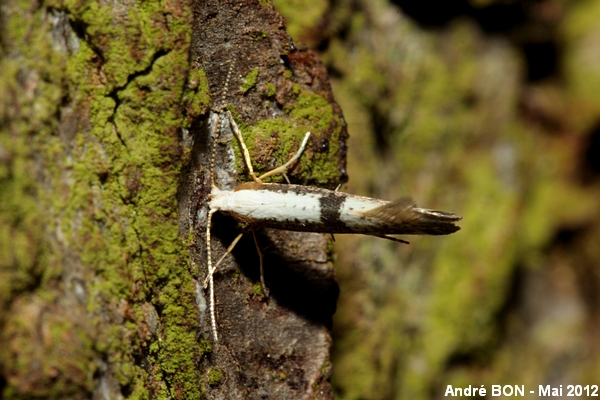
|
Upper side view. |
| [To know more about the Blackthorn Argent] [Previous picture] [Top] |
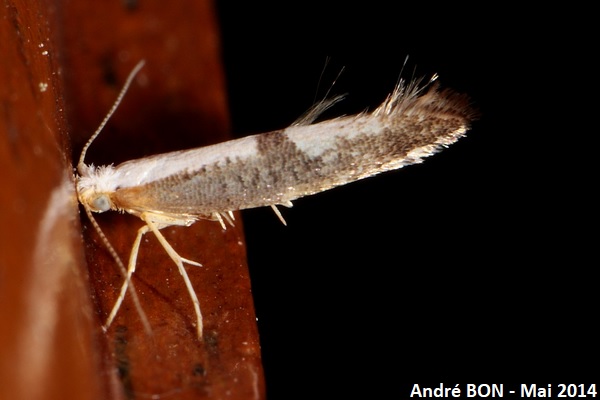
|
This specimen which flew into my garden workshop, whose door was left open, allowed me to shoot very close views (with extender tubes to reduce the minimum focus distance). |